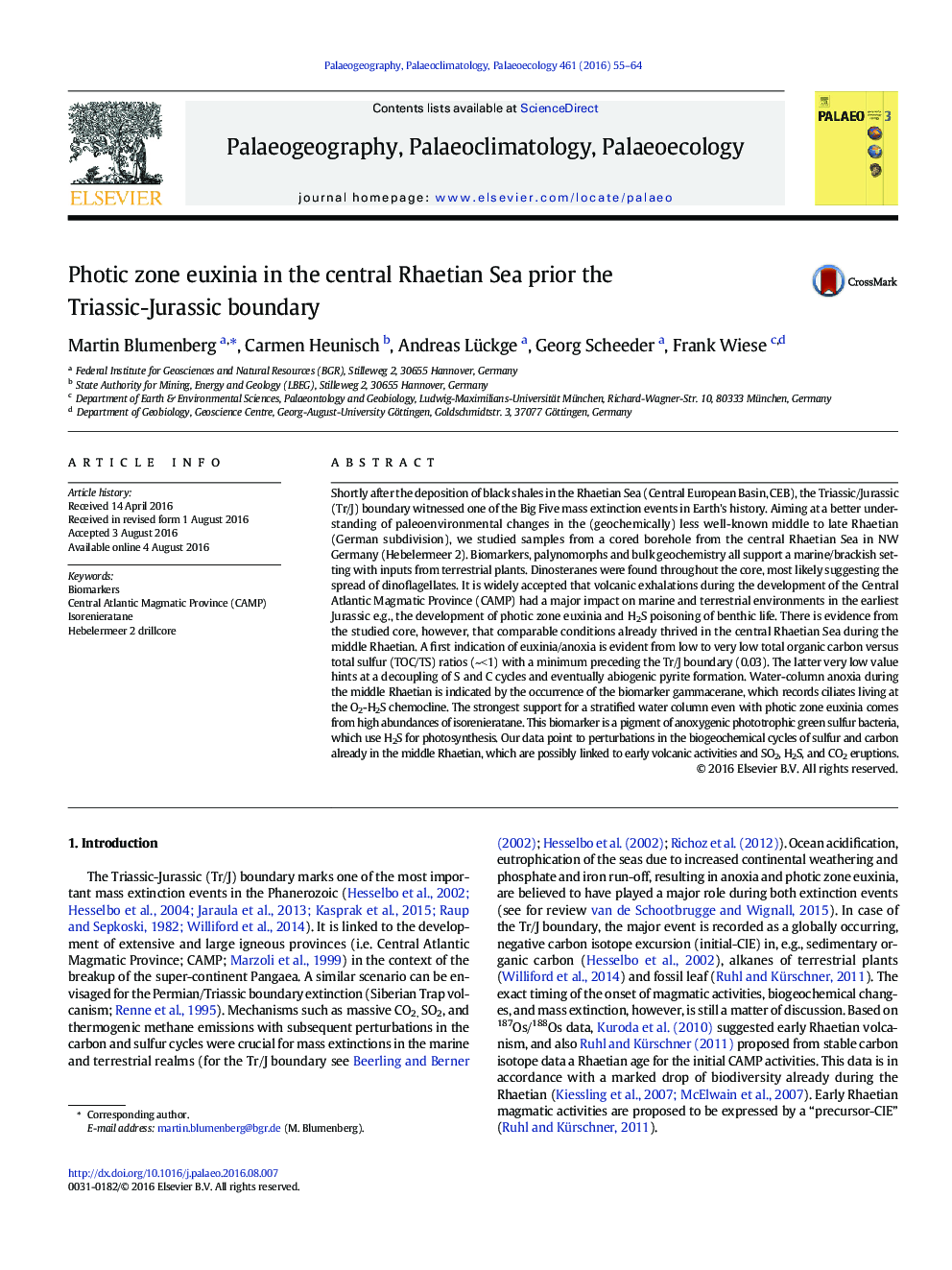| کد مقاله | کد نشریه | سال انتشار | مقاله انگلیسی | نسخه تمام متن |
|---|---|---|---|---|
| 4465521 | 1622130 | 2016 | 10 صفحه PDF | دانلود رایگان |
• Middle Rhaetian shales in Central Rhaetian sea rich in organic carbon.
• Photic zone euxinia in Central Rhaetian Sea already in the Middle Rhaetian.
• CAMP-related volcanism most likely responsible for perturbations.
Shortly after the deposition of black shales in the Rhaetian Sea (Central European Basin, CEB), the Triassic/Jurassic (Tr/J) boundary witnessed one of the Big Five mass extinction events in Earth's history. Aiming at a better understanding of paleoenvironmental changes in the (geochemically) less well-known middle to late Rhaetian (German subdivision), we studied samples from a cored borehole from the central Rhaetian Sea in NW Germany (Hebelermeer 2). Biomarkers, palynomorphs and bulk geochemistry all support a marine/brackish setting with inputs from terrestrial plants. Dinosteranes were found throughout the core, most likely suggesting the spread of dinoflagellates. It is widely accepted that volcanic exhalations during the development of the Central Atlantic Magmatic Province (CAMP) had a major impact on marine and terrestrial environments in the earliest Jurassic e.g., the development of photic zone euxinia and H2S poisoning of benthic life. There is evidence from the studied core, however, that comparable conditions already thrived in the central Rhaetian Sea during the middle Rhaetian. A first indication of euxinia/anoxia is evident from low to very low total organic carbon versus total sulfur (TOC/TS) ratios (~<1) with a minimum preceding the Tr/J boundary (0.03). The latter very low value hints at a decoupling of S and C cycles and eventually abiogenic pyrite formation. Water-column anoxia during the middle Rhaetian is indicated by the occurrence of the biomarker gammacerane, which records ciliates living at the O2-H2S chemocline. The strongest support for a stratified water column even with photic zone euxinia comes from high abundances of isorenieratane. This biomarker is a pigment of anoxygenic phototrophic green sulfur bacteria, which use H2S for photosynthesis. Our data point to perturbations in the biogeochemical cycles of sulfur and carbon already in the middle Rhaetian, which are possibly linked to early volcanic activities and SO2, H2S, and CO2 eruptions.
Journal: Palaeogeography, Palaeoclimatology, Palaeoecology - Volume 461, 1 November 2016, Pages 55–64
